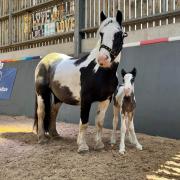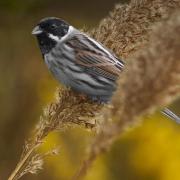Shearing sheep requires strength and skill, as writer and photographer Irene Amiet discovered during a day on a Lancashire farm

Ross Anthony was on his way from Cumbria to his native Wales when he got lost in Lancashire – and he never left. That’s his explanation of how he came to open a livestock service business in Bilsborrow near Preston. Filling a gap in professional clipping and shearing in the North West, his business has been going strong for more than 20 years.
Among the tasks tackled by Ross Anthony Livestock Services, shearing plays a major role. All kinds of animals need shearing – goats, alpacas and, of course, sheep.
When watching a sheep shearer at work, two things are apparent – shearing is a skill and an enormous physical challenge. According to Ross, a day on the shearing trailer is the equivalent of running a marathon. ‘We work in teams and in a group, you try to outdo each other; you push each other on in a friendly competition,’ he says. ‘The competition turns into a bit of an addiction which helps the work process.’
Shearers wear moccasins that allow them a better feel on the animal they’re working on and help prevent slipping. ‘It’s all about your grip,’ says Anthony. The shearers swing the animals on to a trailer in a way that makes for a surprisingly gentle landing and immediately start clipping in a continuous flow.

Some sheep breeds would lose their wool naturally, but without shearing most coats would turn so shaggy in the summer the animal would suffer from heat and maggots that could lay eggs in dirty mud-trailing wool. Some sheep coats could get so heavy that a fallen animal couldn’t right itself without help. For a sheep, being shorn might be compared to a human going to the dentist – not always the most comfortable experience but necessary to avoid a potential health disaster.
Anthony is a Gold Seal shearer, meaning he has all the qualifications that can be gained in the field. He comes from a farming family and learned to shear in his native south west Wales before honing his craft in France and Spain, followed by a few seasons in New Zealand. ‘It’s the travelling lifestyle that appealed to me,’ he says, ‘and the companionship.’ A hint of a southern hemisphere accent is still present when he talks of shearing. Nowadays, Anthony travels much less and enjoys having a base to spend time with his young family.
On top form, he shears up to 50 sheep an hour, but 40 is a more feasible number these days. Speed depends on both the shearer’s skill and the breed, as some of the latter are more docile than others. Merinos, famous for their wool, are easier than a feisty Lancashire Lonk. ‘Even when you hold them as gently as you can, a Lonk is a challenge,’ says Anthony. He thinks women might potentially make better shearers, as they seem to have the touch that helps keep the animals still. ‘If you’re rough with the sheep, they’ll fight you and it’ll take you longer.’
The work is tough on the body and few female shearers come forward. Considering the average weight of 80-90kg per sheep, accidents would seem unavoidable for the strongest shearers, but it rarely happens. However, Anthony was once kicked in the eye.

Due to the nature of the job, pay is good. To reach a professional level with the speed and endurance that keeps a shearer competitive takes time. It’s the reason a shearer shortage in the UK. ‘Given a choice between sitting in a cool tractor as a silage contractor, or wrestling sheep, many young people choose the more comfortable route,’ he says.
Ross Anthony’s lads shear 18,000 sheep in the North West during a season, from spring to autumn. On top of trying to find local men and women, he takes on seasonal workers from Australia, New Zealand and South Africa, while trying to support youngsters starting out by pushing work their way.
Wool used to be a pillar of English economy. Nowadays, there is little money in it. The hauling and cleaning costs take away any profit to be had. For the environmentally conscious consumer, wool would be an attractive alternative to oil-based synthetic fabric and could see a renaissance. Using less colour to mark sheep during the year keeps the cleaning costs down.
Anthony couldn’t picture another career, but he often forgets what sleep is. After a day trimming dairy cow hooves on a Lancashire farm, all he hopes is to make it home for tea. Aware his alarm will ring at 2am once more, he says: ‘I have a very understanding wife.’
You suspect he doesn’t need to count sheep after a hard day’s work.



























